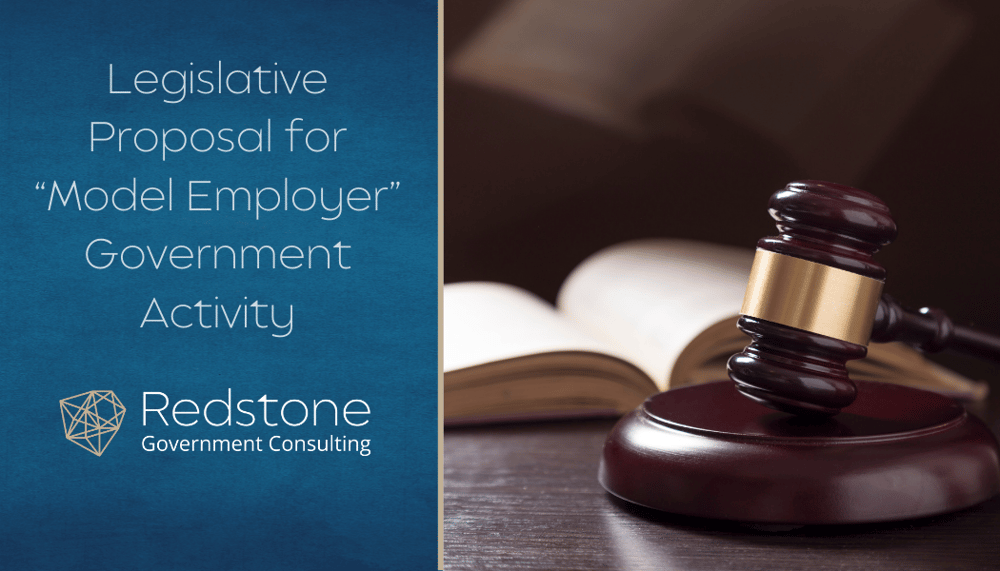A Prospective View of Model Employer (Government Contractor)
On April 15, 2015, members of the self-proclaimed Congressional Progressive Caucus called for an Executive Order (EO) which would define a model employer and provide model employers with preferences in terms of government contract awards. The Progressive Caucus envisions an EO which would define a model employer to include a minimum wage of $15/hour, other benefits including paid time off, full-time hours and predictable schedules. As noted by this Caucus, the 2014 EO which raised the minimum wage to $10.10/hour for employees of government contractors was simply not enough to eliminate stagnant wages which tether jobs to poverty and government assistance.
Apparently government assistance in terms of artificially high wages paid by government contractors and charged to government contracts is more acceptable than direct (and highly visible) government assistance. Additionally, this Caucus mentioned strikes by fast-food workers who are pushing for $15 hour, a coordinated action which “undoubtedly caused Wal-Mart, McDonald’s and others to increase wages for low-paid workers”.
The Progressive Caucus forgot to mention some minor details to include the fact that the 2014 EO increasing wages to $10.10/hour was supposed to increase employee morale and employee productivity, a supposition apparently lost on the employees who have subsequently staged a number of walk-outs demanding more, more, more. Similarly, while mentioning actions by Wal-Mart to increase wages, Wal-Mart announced that it was voluntarily increasing wages to a minimum of $9/hour in 2015 and $10/hour in 2016. “Slightly” short of the $15/hour which would become the minimum hourly wage for government contractors if the Progressive Caucus persuades Barack Obama to issue an new EO.
In light of the current proposal for a model employer with government contract awards’ preference, we’ve considered how this proposal and other trends will define the model employer, model contractor of the future. The following is a short list (slightly speculative) of the expectations to achieve the status of model employer/model government contractor in 2020.
- Employment applications will be a blank form which will allow employment applicants total flexibility in terms of what information they provide to the potential employer. This will avoid disclosure of any information which could possibly be construed to be an inappropriate reason for not considering the applicant for all available vacancies. For example, employers cannot request information concerning prior employment experience (or lack thereof) or college degrees. Building upon the trend to ban the box (asking about an applicant’s criminal record which has been determined by the US Department of Labor to be discriminatory), job applicants will not be asked, nor allowed to provide information for which they might have an unfair “statistical” disadvantage or advantage.
- Job announcements will be listed as “job announcements” with no other specificity which could be construed as directing applicants to lower paying jobs or lower paying fields of employment. In fact, this risk will be phased-out for the model employer who will be required to eliminate all job titles and all job descriptions by 2022.
- Hourly wages will be standardized (equalized) for all employees of the model employer; hence, eliminating any possible disparity in rates of pay for any person or group of persons. The minimum hourly wage will become “the” hourly wage which will be established annually by the Department of Personnel and Pay Equalization Board, a new agency staffed entirely by government employees with no other experience. Thus, no model employer will have any competitive advantage over other model employers.
- Employees of the model employer must be allowed to participate in telework or work at home programs. This will apply equally to all employees regardless of their job function. Model employers will make no attempt to determine if the work at home program is effective or productive because these have already been deemed (by the Department of Labor) to be in the best interest of the employer.
- Employees of the model employer cannot be involuntarily terminated for any reason; hence, eliminating any possible allegations of wrongful termination. Additionally, it is unlikely that terminated employees could find alternate employment at the equalized hourly rate because no competitive company could possibly pay that rate and remain competitive.
- Employees will be given training on how to be an effective whistleblower (in addition to added protections from employer retaliation). Model employers will be required to update this training annually and to provide an independent subcontractor to anonymously assist employees who are contemplating filing a hotline allegation. Employees will be allowed to file hotline complaints on employer time (without any budgetary constraints) and using employer equipment
- Model employers will be given government subsidies to enable the model employer to compete for non-government business. The fact that model employers are not competitive in a free market is patently unfair to the model employer; hence, the need for government subsidies to offset the competitive disadvantage.



 Mike Steen is a Emeritus Advisor with Redstone Government Consulting, Inc. and a specialist in complex compliance issues to include major contractor cost accounting & business system regulations, financial compliance, resolution of DCAA audit issues, Cost Accounting Standards application, litigation support, and claims preparation. Prior to joining Redstone Government Consulting, Mike served in a number of capacities with DCAA for over thirty years, and upon his retirement, he was one of the top seven senior executives with DCAA. Mike Served as a Regional Director for two DCAA regions, and during that time was responsible for audits of approximately $25B and 800 employees. In October 2001, he was selected for the Senior Executive Service and in 2006 he received the Presidential Rank Award. During Mike’s tenure with DCAA, he was involved in conducting or managing a variety of compliance audits, to include cost proposals, billing systems, Cost Accounting Standards, claims, defective pricing, and then-evolving programs such as restructuring, financial capability and agreed-upon procedures. He directly supported the government litigation team on significant contract disputes and has prepared and presented various lectures and seminars to DCAA staff and business community leaders. Since joining Redstone Government Consulting in June 2007, Mike has developed and presented training and seminars on Government Contracts Compliance to NCMA, Federal Publications Seminars and various clients. Mike also is a prolific contributor of written articles to government contracting publications, as well as to our own Government Insights Newsletter. Mike also serves as the director of our training service offerings, with responsibilities for preparing and developing course content as well as instructing our seminars to clients and general audiences throughout the U.S. Mike also serves as a faculty instructor for the Federal Publications Seminars organization. Education Mike has a BS Degree in Business Administration from Wichita State University. He is also a graduate of the DCAA Director’s Fellowship Program in Management, and has a Masters Degree in Administration from Central Michigan University. Mr. Steen also completed a number of OPM’s management and executive development courses.
Mike Steen is a Emeritus Advisor with Redstone Government Consulting, Inc. and a specialist in complex compliance issues to include major contractor cost accounting & business system regulations, financial compliance, resolution of DCAA audit issues, Cost Accounting Standards application, litigation support, and claims preparation. Prior to joining Redstone Government Consulting, Mike served in a number of capacities with DCAA for over thirty years, and upon his retirement, he was one of the top seven senior executives with DCAA. Mike Served as a Regional Director for two DCAA regions, and during that time was responsible for audits of approximately $25B and 800 employees. In October 2001, he was selected for the Senior Executive Service and in 2006 he received the Presidential Rank Award. During Mike’s tenure with DCAA, he was involved in conducting or managing a variety of compliance audits, to include cost proposals, billing systems, Cost Accounting Standards, claims, defective pricing, and then-evolving programs such as restructuring, financial capability and agreed-upon procedures. He directly supported the government litigation team on significant contract disputes and has prepared and presented various lectures and seminars to DCAA staff and business community leaders. Since joining Redstone Government Consulting in June 2007, Mike has developed and presented training and seminars on Government Contracts Compliance to NCMA, Federal Publications Seminars and various clients. Mike also is a prolific contributor of written articles to government contracting publications, as well as to our own Government Insights Newsletter. Mike also serves as the director of our training service offerings, with responsibilities for preparing and developing course content as well as instructing our seminars to clients and general audiences throughout the U.S. Mike also serves as a faculty instructor for the Federal Publications Seminars organization. Education Mike has a BS Degree in Business Administration from Wichita State University. He is also a graduate of the DCAA Director’s Fellowship Program in Management, and has a Masters Degree in Administration from Central Michigan University. Mr. Steen also completed a number of OPM’s management and executive development courses.